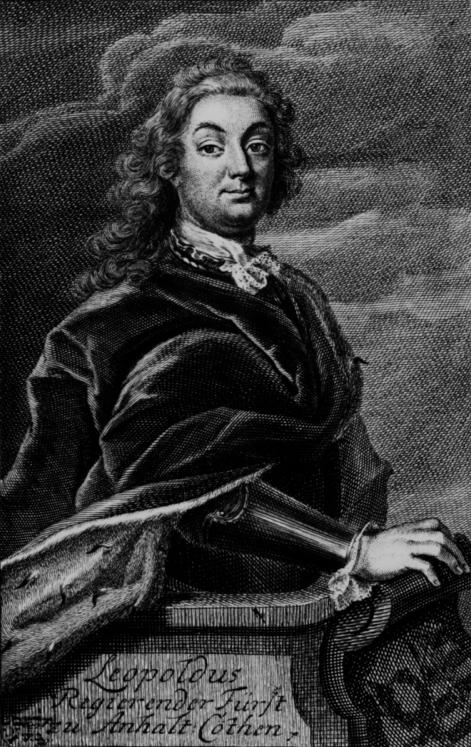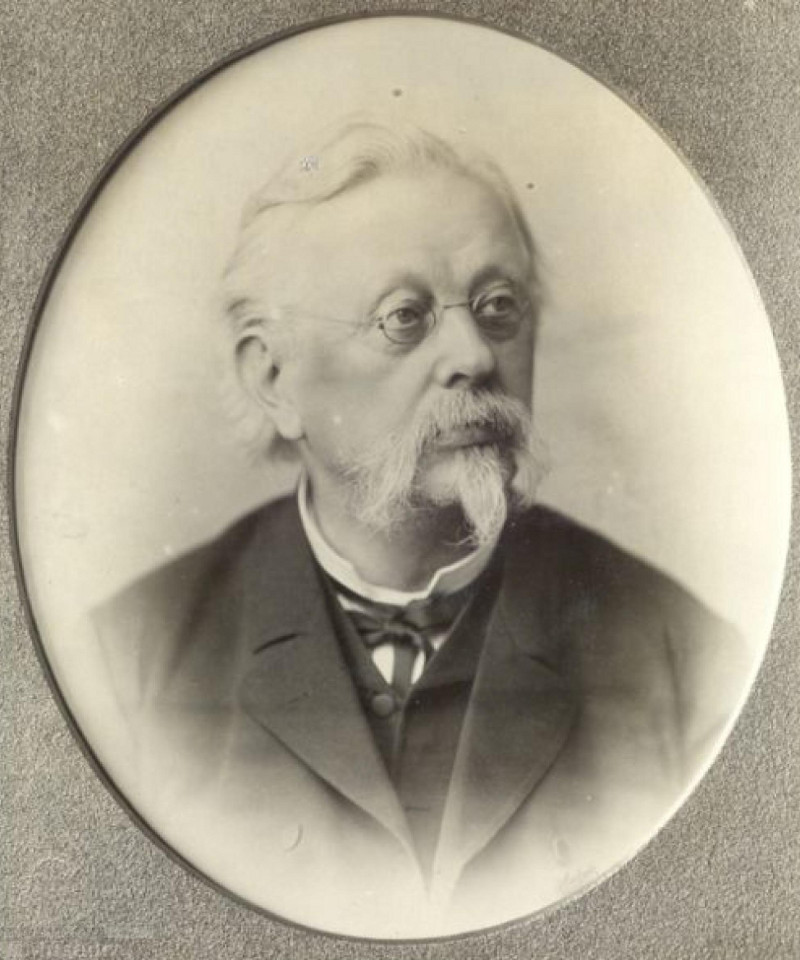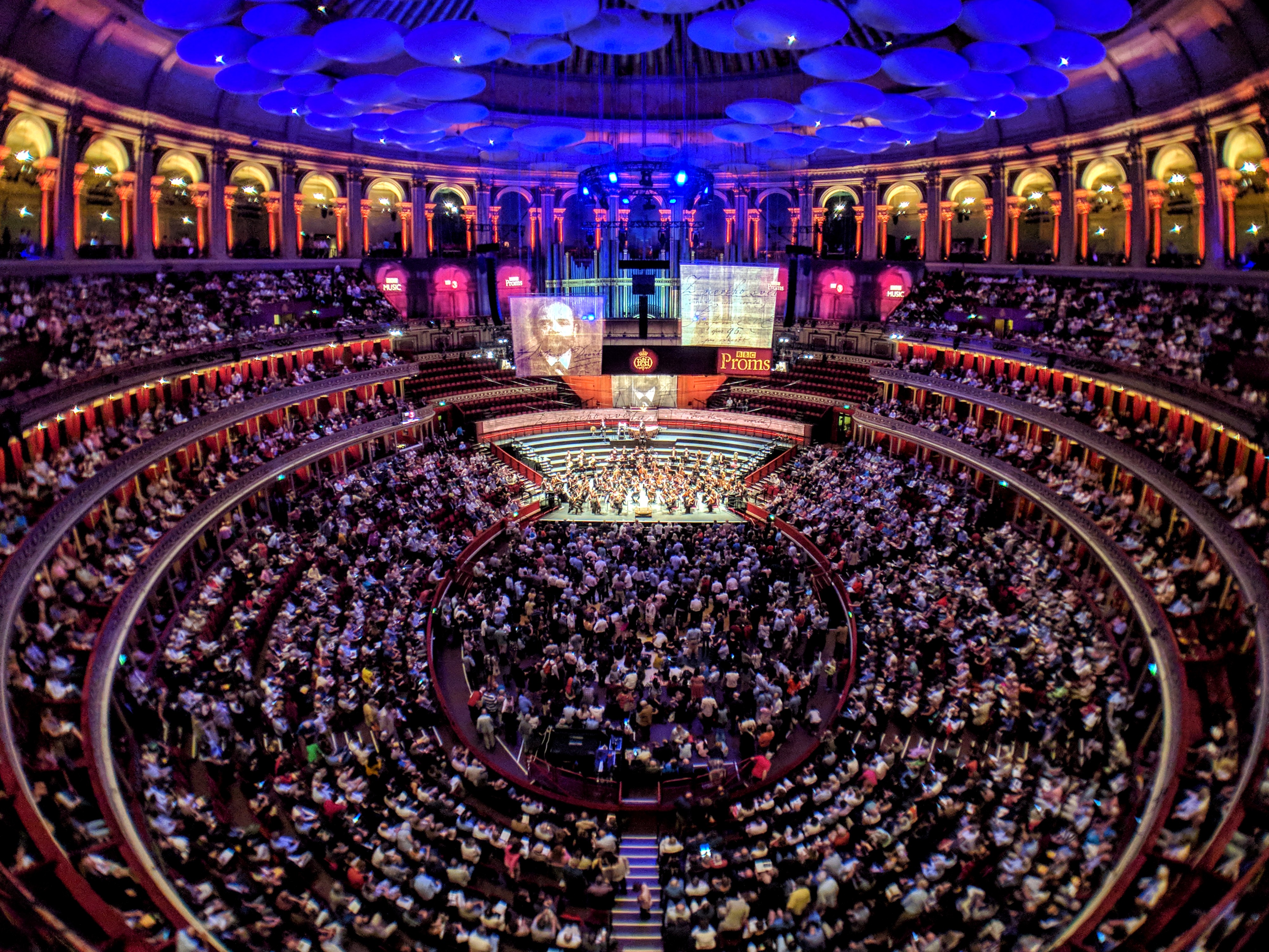|
Klagt, Kinder, Klagt Es Aller Welt, BWV 244a
' (Cry, children, cry to all the world), also known as ' (Köthen funeral music), BWV 1143, BWV244a, is a cantata by Johann Sebastian Bach. He composed it in 1729 for the funeral of Leopold, Prince of Anhalt-Köthen. The music is lost, but the libretto survives. As Bach is known to have used musical material which also appeared in two surviving works, one being the '' St Matthew Passion'', it has been possible to make reconstructions. The cantata is in 24 movements ( choruses, arias and recitatives) divided into four parts. The first deals with the principality in mourning, the second the prince's departing and the salvation of his soul. The third part, followed by a homily, details Leopold's commemoration. The final section is about the farewell and about eternal rest. History and words The choice of Bach for the funeral music was not surprising. He had worked full-time at Leopold's court between 1717 and 1723. When he moved to Leipzig, he retained his role as Köthen cou ... [...More Info...] [...Related Items...] OR: [Wikipedia] [Google] [Baidu] |
St Matthew Passion
The ''St Matthew Passion'' (german: Matthäus-Passion, links=-no), BWV 244, is a '' Passion'', a sacred oratorio written by Johann Sebastian Bach in 1727 for solo voices, double choir and double orchestra, with libretto by Picander. It sets the 26th and 27th chapters of the Gospel of Matthew (in the Luther Bible) to music, with interspersed chorales and arias. It is widely regarded as one of the greatest masterpieces of Baroque sacred music. The original Latin title translates to "The Passion of our Lord J susC[hrist">rist.html" ;"title="susC[hrist">susC[hristaccording to the Evangelist Matthew".Markus Rathey. 2016. ''Bach's Major Vocal Works. Music, Drama, Liturgy'', Yale University Press History The ''St Matthew Passion'' is the second of two Passion settings by Bach that have survived in their entirety, the first being the '' St John Passion'', first performed in 1724. Versions and contemporaneous performances Little is known with certainty about the creation proc ... [...More Info...] [...Related Items...] OR: [Wikipedia] [Google] [Baidu] |
Neue Bach-Ausgabe
The New Bach Edition (NBE) (german: Neue Bach-Ausgabe; NBA), is the second complete edition of the music of Johann Sebastian Bach, published by Bärenreiter. The name is short for Johann Sebastian Bach (1685–1750): New Edition of the Complete Works (''Johann Sebastian Bach (1685–1750): Neue Ausgabe sämtlicher Werke''). It is a historical-critical edition (German: ''historisch-kritische Ausgabe'') of Bach's complete works by the Johann Sebastian Bach Institute (Johann-Sebastian-Bach-Institut) in Göttingen and the Bach Archive (Bach-Archiv) in Leipzig, When Bach died most of his work was unpublished. The first complete edition of Bach's music was published in the second half of the nineteenth century by the Bach Gesellschaft (Bach-Gesellschaft Ausgabe, BGA). The second complete edition includes some discoveries made since 1900, but there are relatively few such scores. The significance of the NBE lies more in its incorporation of the latest scholarship. Although the NBE is an ... [...More Info...] [...Related Items...] OR: [Wikipedia] [Google] [Baidu] |
Die Zeit, Die Tag Und Jahre Macht, BWV 134a
Johann Sebastian Bach composed the secular cantata (Time, which day and year doth make), BWV134.1, BWV134a, while he was in the service of the court of Leopold, Prince of Anhalt-Köthen. Bach wrote the work as a ''serenata'' for the celebration of New Year's Day 1719. The libretto by Christian Friedrich Hunold, an academic at the University of Halle, takes the form of a dialogue between two allegorical figures, ''Time'' and ''Divine Providence'', representing the past and future, respectively. Bach set the words in eight movements consisting of alternating recitatives and arias, culminating in a choral finale. Most movements are duets of solo voices, an alto as ''Divine Providence'' and a tenor as ''Time''. Even the closing movement features long duet passages, leading to parts for four voices. The singers are supported by a baroque instrumental ensemble of two oboes, two violins, viola and continuo. The character of the music is close to baroque opera, including French da ... [...More Info...] [...Related Items...] OR: [Wikipedia] [Google] [Baidu] |
Parody
A parody, also known as a spoof, a satire, a send-up, a take-off, a lampoon, a play on (something), or a caricature, is a creative work designed to imitate, comment on, and/or mock its subject by means of satiric or ironic imitation. Often its subject is an original work or some aspect of it (theme/content, author, style, etc), but a parody can also be about a real-life person (e.g. a politician), event, or movement (e.g. the French Revolution or 1960s counterculture). Literary scholar Professor Simon Dentith defines parody as "any cultural practice which provides a relatively polemical allusive imitation of another cultural production or practice". The literary theorist Linda Hutcheon said "parody ... is imitation, not always at the expense of the parodied text." Parody may be found in art or culture, including literature, music, theater, television and film, animation, and gaming. Some parody is practiced in theater. The writer and critic John Gross observes in his ''Oxford Boo ... [...More Info...] [...Related Items...] OR: [Wikipedia] [Google] [Baidu] |
Christiane Eberhardine Of Brandenburg-Bayreuth
Christiane Eberhardine of Brandenburg-Bayreuth (19 December 1671 – 4 September 1727) was Electress of Saxony from 1694 to 1727 (her death) and Queen Consort of the Polish–Lithuanian Commonwealth from 1697 to 1727 by marriage to Augustus II the Strong. Not once throughout the whole of her thirty-year queenship did she set foot in Poland, instead living in Saxony in self-imposed exile. Born a German margravine, she was called ''Sachsens Betsäule'', "Saxony's pillar of prayer", by her Protestant subjects for her refusal to convert to Catholicism. Despite the allegiance of Christiane Eberhardine and her mother-in-law, Anna Sophie of Denmark, to Lutheranism, her husband and son, later Augustus III, both became Catholics, ensuring Catholic succession in the Albertine lands after a century-and-a-half. Biography Early life She was the firstborn child of Christian Ernst, Margrave of Brandenburg-Bayreuth, and his second wife, Princess Sophie Luise of Württemberg, daughter of ... [...More Info...] [...Related Items...] OR: [Wikipedia] [Google] [Baidu] |
Wilhelm Rust
Wilhelm Rust (August 15, 1822 – May 2, 1892) was a German musicologist and composer. He is most noted today for his substantial contributions to the Bach Gesellschaft edition of the works of Johann Sebastian Bach. Born in Dessau, Rust studied piano and organ with his uncle Wilhelm Karl Rust, and later under Friedrich Schneider (1843–1846). From 1845 to 1848 he was music teacher in a Hungarian nobleman's family. He went to Berlin in 1849, where he taught and joined the Singakademie in 1850. He joined the Leipzig Bach-Verein in 1850, and played in numerous concerts. He became organist of St. Luke's in 1861, conductor of the Berlin Bach-Verein from 1862 to 1874, and Royal Music Director in 1864. He received an honorary D.Phil. from the University of Marburg in 1868. In 1870, he became teacher of theory and composition at the Stern Conservatory. In 1878 he moved to Leipzig, where he became a teacher at the Leipzig Conservatory and organist at the Thomaskirche. In 1880 he succeed ... [...More Info...] [...Related Items...] OR: [Wikipedia] [Google] [Baidu] |
BBC Radio 3
BBC Radio 3 is a British national radio station owned and operated by the BBC. It replaced the BBC Third Programme in 1967 and broadcasts classical music and opera, with jazz, world music, Radio drama, drama, High culture, culture and the arts also featuring. The station describes itself as "the world's most significant commissioner of new music", and through its BBC Radio 3 New Generation Artists scheme, New Generation Artists scheme promotes young musicians of all nationalities. The station broadcasts the The Proms, BBC Proms concerts, live and in full, each summer in addition to performances by the BBC Orchestras and Singers. There are regular productions of both classic plays and newly commissioned drama. Radio 3 won the Sony Radio Academy UK Station of the Year Gold Award for 2009 and was nominated again in 2011. According to RAJAR, the station broadcasts to a weekly audience of 1.7 million with a listening share of 1.3% as of September 2022. History Radio 3 is the ... [...More Info...] [...Related Items...] OR: [Wikipedia] [Google] [Baidu] |
Catherine Bott
Catherine Bott (born 11 September 1952) is a British soprano and a Baroque specialist. She has also pursued a broadcasting career. Following her studies at The King's High School For Girls and Guildhall School of Music and Drama, with Arthur Reckless, she began her career as a member of the English Baroque-jazz crossover group, The Swingle Singers (then called "Swingle II"). By 1980 she had begun appearing frequently in the New London Consort and thereafter began performing across the world in Europe, Latin America and the USSR with several other period-instrument groups. She has recorded extensively, for example as Dido in Purcell's ''Dido and Aeneas'' (with Christopher Hogwood and the Academy of Ancient Music in 1994), with the choir of King's College, Cambridge conducted by Stephen Cleobury in Bach's '' St. John Passion'', as Venus in John Blow’s '' Venus and Adonis'' with Philip Pickett, and in Monteverdi's ''L'Incoronazione di Poppea'' with Sir John Eliot Gardiner. She a ... [...More Info...] [...Related Items...] OR: [Wikipedia] [Google] [Baidu] |
Viola Da Gamba
The viol (), viola da gamba (), or informally gamba, is any one of a family of bowed, fretted, and stringed instruments with hollow wooden bodies and pegboxes where the tension on the strings can be increased or decreased to adjust the pitch of each of the strings. Frets on the viol are usually made of gut, tied on the fingerboard around the instrument's neck, to enable the performer to stop the strings more cleanly. Frets improve consistency of intonation and lend the stopped notes a tone that better matches the open strings. Viols first appeared in Spain in the mid-to-late 15th century, and were most popular in the Renaissance and Baroque (1600–1750) periods. Early ancestors include the Arabic ''rebab'' and the medieval European vielle,Otterstedt, Annette. ''The Viol: History of an Instrument. ''Kassel: Barenreiter;-Verlag Karl Votterle GmbH & Co; 2002. but later, more direct possible ancestors include the Venetian ''viole'' and the 15th- and 16th-century Spanish ''vihuel ... [...More Info...] [...Related Items...] OR: [Wikipedia] [Google] [Baidu] |
Christian Ferdinand Abel
Christian Ferdinand Abel (July or August 1682, Hanover, Germany – buried 3 April 1761 (or 1737?), Köthen, Germany) was one of the most famous German Baroque violinists, cellists and especially viol virtuosos. His father was the composer, violinist and organist Clamor Heinrich Abel. For some time Christian served in the Swedish army of Charles XII during the occupation of northern Germany. There he married the Swede Anna Christina Holm. Then he went to Berlin, where he was a prominent member of the Hofkapelle of King Frederick I of Prussia. He remained there until its dissolution by Frederick William in 1713. With several of his colleagues he moved to Köthen to work at the court there as a violinist and gambist under Augustin Reinhard Stricker. Abel also worked with Stricker's successor Johann Sebastian Bach. Bach was godfather of his daughter Sophie-Charlotte born on 6 January 1720 in Köthen. In the same year, Abel and Bach accompanied the Prince Leopold on his trip to ... [...More Info...] [...Related Items...] OR: [Wikipedia] [Google] [Baidu] |
Soprano
A soprano () is a type of classical female singing voice and has the highest vocal range of all voice types. The soprano's vocal range (using scientific pitch notation) is from approximately middle C (C4) = 261 Hz to "high A" (A5) = 880 Hz in choral music, or to "soprano C" (C6, two octaves above middle C) = 1046 Hz or higher in operatic music. In four-part chorale style harmony, the soprano takes the highest part, which often encompasses the melody. The soprano voice type is generally divided into the coloratura, soubrette, lyric, spinto, and dramatic soprano. Etymology The word "soprano" comes from the Italian word '' sopra'' (above, over, on top of),"Soprano" '' |
Anna Magdalena Bach
Anna Magdalena Bach (née Wilcke or Wilcken) (22 September 1701 – 22 February 1760) was a professional singer and the second wife of Johann Sebastian Bach. Biography Anna Magdalena Wilcke was born at Zeitz, in the Electorate of Saxony. While little is known about her early musical education, the family was musical. Her father, Johann Caspar Wilcke (c. 1660–1733), was a trumpet player, who had a career at the courts of Zeitz and Weißenfels. Her mother, Margaretha Elisabeth Liebe, was the daughter of an organist. By 1721 Anna Magdalena was employed as a singer (soprano) at the princely court of Anhalt-Cöthen. Johann Sebastian Bach had been working there as ''Capellmeister'', or director of music, since December 1717. It is possible that he first heard her sing at the ducal court in Weißenfels, where he is known to have performed as early as 1713, when his Hunting Cantata was premiered there. Anna and Johann married on 3 December 1721, seventeen months after the death ... [...More Info...] [...Related Items...] OR: [Wikipedia] [Google] [Baidu] |





